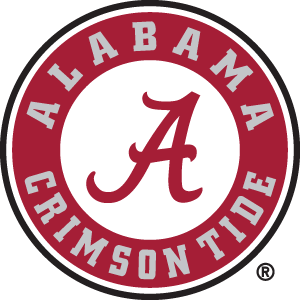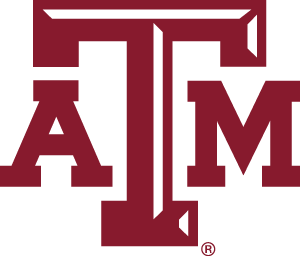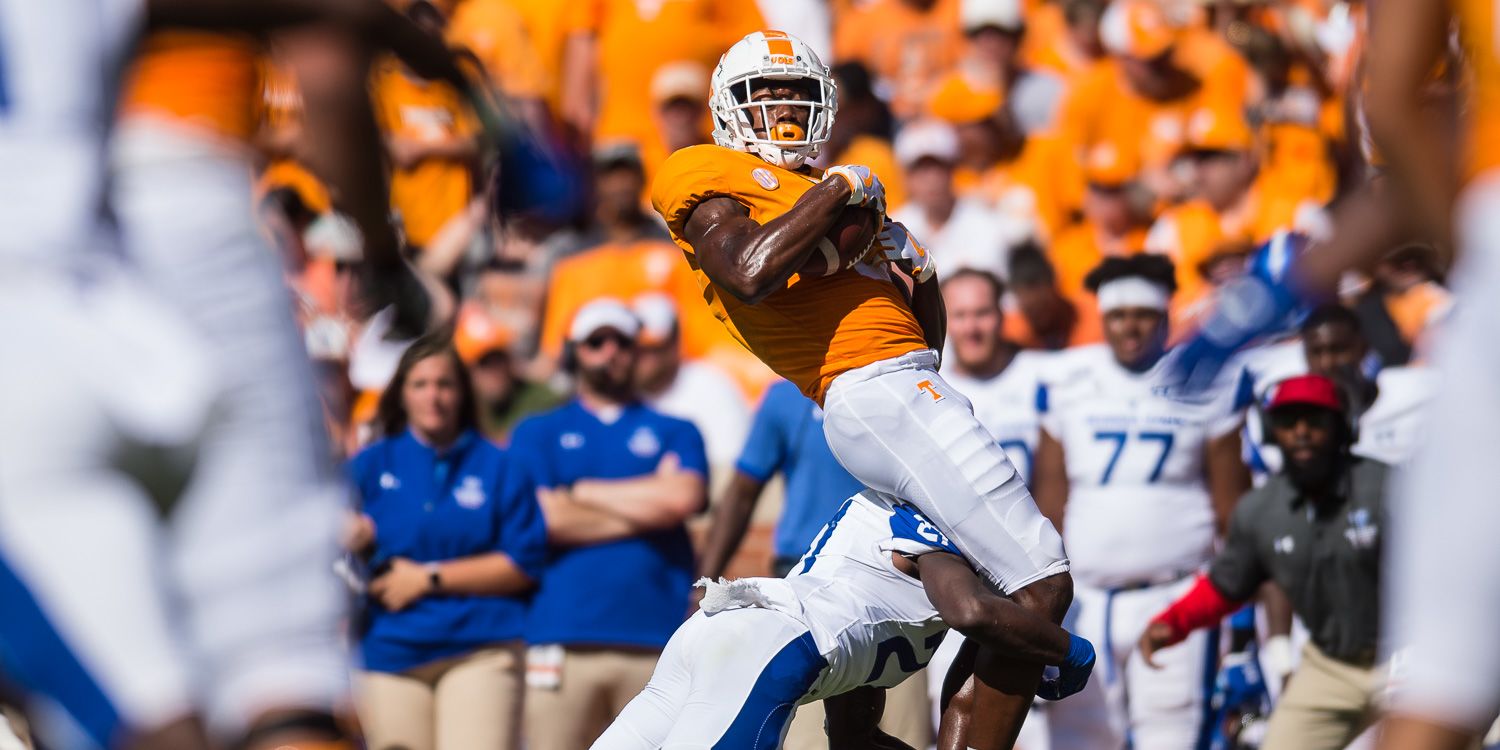In previous posts, the Vols quarterbacks and running backs have both ranked No. 4 in the SEC. As we’ll see over the next several days, there are three other units that also rank among the Top 4 in the SEC. The wide receiving corps, however, isn’t one of them.
2020 SEC Pass-Catcher Rankings
 | LSU’s going to miss quarterback Joe Burrow, so nobody’s expecting the Tigers’ pass-catchers to rack up 5,000 yards again this fall. But hoo-boy was that group good. So good, in fact, that they can lose Justin Jefferson (1,540 yards) and Thaddeus Moss (570 yards) to the NFL, plus two other guys and 332 yards to graduation . . . and still return almost 3,000 yards. Leading the way is Ja’Marr Chase (1,780 yards) and Terrace Marshall Jr. (671 yards), but there’s a ton of others ready to roll for whoever replaces Burrow. | |||
| Returning Production (in yards) | Unit Recruiting Ranking | |||
| 1 | Receiving | Rushing | Overall | |
| 2910 | 5 | 2915 | 1 |
 | Returning Production | Unit Recruiting Ranking | Jerry Jeudy and Henry Ruggs III are off to the NFL, but DeVonta Smith, Jaylen Waddle, and a host of others are back. | ||
| Receiving | Rushing | Overall | Jerry Jeudy and Henry Ruggs III are off to the NFL, but DeVonta Smith, Jaylen Waddle, and a host of others are back. | ||
| 2 | 2102 | 29 | 2131 | 6 | Jerry Jeudy and Henry Ruggs III are off to the NFL, but DeVonta Smith, Jaylen Waddle, and a host of others are back. |
 | Returning Production | Unit Recruiting Ranking | Quartney Davis and Kendrick Rogers are gone, but the Aggies’s pass-catchers return 65% of their production. And they have their QB back. | ||
| Receiving | Rushing | Overall | |||
| 3 | 1801 | 54 | 1855 | 3 | |
 | Returning Production | Unit Recruiting Ranking | No Gator got more than 657 receiving yards last year, but eight guys got 194 or more. Half of them are back, including tight end Kyle Pitts. | ||
| Receiving | Rushing | Overall | |||
| 4 | 1471 | 24 | 1495 | T-4 |
| Returning Production | |||||
| Rank | Team | Receiving | Rushing | Overall | Unit Recruiting Ranking |
| 5 | Auburn | 1734 | 214 | 1948 | T-4 |
| 6 | Georgia | 1610 | 56 | 1666 | 2 |
| 7 | Mississippi | 1716 | 16 | 1732 | 13 |
| 8 | Arkansas | 1537 | 86 | 1623 | 9 |
| 9 | South Carolina | 1081 | 12 | 1093 | 8 |
| 10 | Tennessee | 689 | 14 | 703 | 7 |
| 11 | Mississippi State | 795 | 10 | 805 | 10 |
| 12 | Kentucky | 749 | 7 | 756 | 12 |
| 13 | Missouri | 692 | 0 | 692 | 11 |
| 14 | Vanderbilt | 791 | 0 | 791 | 14 |
Additional comments
There’s a lot of symbiosis in college football, and this is especially true among quarterbacks and wide receivers/tight ends. These rankings, for the most part, try to view the respective units without regard to the other positions on which they rely.
When you view them that way, LSU ends up on top, due primarily to the return of Ja’Marr Chase, who’s a monster. He is joined by Terrace Marshall and a bunch of others as well, so the Tigers’ pass-catchers are an able bunch.
Behind LSU, there’s a logjam of teams that look very similar. Alabama gets the edge for No. 2 with the return of Da’Vonta Smith and Jaylen Waddle, but A&M and Kentucky aren’t too far behind. Florida’s an interesting study, as the Gators don’t really appear to have a superstar wide receiver, but do have an excellent pass-catcher in tight end Kyle Pitts and a swarm of other productive guys.
Why are the Auburn Tigers No. 5 if they return 1,948 total yards among their pass-catchers (third-most in the league) and tie for fourth in unit recruiting ranking? I have to look this up every time because it looks wonky the way it is presented, but there’s a reason for it. The rankings aren’t just based on returning production, but also on projected production, a number that isn’t (but probably should be) included in the presentation of data. The Auburn receiving corps loses very little from last year, so its returning production numbers are high, but its projected production is low compared to other teams because they weren’t very productive last year. It’s close, though.
The Vols rank a lowly No. 10 on this list. This is, by far, the biggest question in my mind for the team. A little peek behind the curtain, though: As I said, the calculations are largely based on both last year’s production and how much of it returns. There is a flaw in the system, though, in that it fails to account for good, experienced players who, for whatever reason, didn’t play the prior year. Both we and the machines tend to forget those guys. So these numbers don’t know about Tennessee’s Brandon Johnson, who appears to have made a calculated decision to redshirt last season so he could be available this fall when the team needs him more. We’ll see.
Your thoughts
What do y’all think? Where did we get it right? Where are we wrong?
